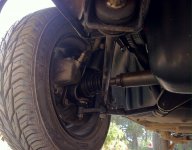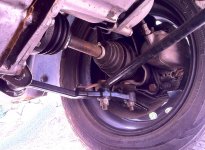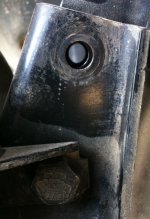- Joined
- Aug 27, 2016
- Messages
- 36
- Points
- 9
Hola Panderos!
I have been fixing up the front end of the 1000s (it needs a name).
With new lower control arms, new OE dampers and all else reviewed and restored, I now come to the conclusion that the previously repaired front RH wing might only be the tip of the iceberg...
Perhaps the damage is more than skin deep.
The RH front wheel has a ton of +ve camber, resembling more a classic Fiat rear-engine car, whilst the LH is more or less vertical as should be. I have the feeling that the control arm bush sits crooked in the body bracket.
My options are to push the control arm body bracket into position ( not sure how to do this), or re-adjust the camber with an adjustable bolt (if it exists for a Panda).
The mot is coming up on 26th sept, I don't know if it'll pass like it is, plus I really don't fancy living with as it is it either!!
Anyone have experience of such a problem?
Thanks for your time, here's a photo of the front end...
Cheers!
I have been fixing up the front end of the 1000s (it needs a name).
With new lower control arms, new OE dampers and all else reviewed and restored, I now come to the conclusion that the previously repaired front RH wing might only be the tip of the iceberg...
Perhaps the damage is more than skin deep.
The RH front wheel has a ton of +ve camber, resembling more a classic Fiat rear-engine car, whilst the LH is more or less vertical as should be. I have the feeling that the control arm bush sits crooked in the body bracket.
My options are to push the control arm body bracket into position ( not sure how to do this), or re-adjust the camber with an adjustable bolt (if it exists for a Panda).
The mot is coming up on 26th sept, I don't know if it'll pass like it is, plus I really don't fancy living with as it is it either!!
Anyone have experience of such a problem?
Thanks for your time, here's a photo of the front end...
Cheers!






